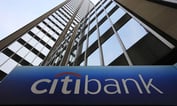A value investor seeks out beaten-up quality stocks. After last year’s wretched market, value manager John Buckingham indeed has a sizable choice. Broadly upbeat and forecasting no recession in 2019, the ace stock picker argues that equities will deliver good returns this year. In fact, 2018’s dreadful market makes him all the more optimistic about this year’s performance, he tells ThinkAdvisor in an interview.
Chief investment officer of the AFAM Division of Kovitz Investment Group, Buckingham’s forecast pivots chiefly on what he sees as an event that’s already priced into the market: a widely anticipated U.S. recession — one that, he contends, will not occur.
(Related: John Buckingham’s Top 5 Stock Picks for 2018)
The value investor, whose focus is on battered, underperforming stocks trading far below their historical norms and that pay a dividend, right now has a big batch of such equities from which to choose.
In the interview, he reveals his Top 8 of a total 120 picks.
Buckingham is manager of The Al Frank Fund (Valux), which has outperformed since its 1998 launch through Dec. 31, 2018, realizing an annualized rate of return of 9.49% versus the S&P 500’s 6.59%. He has been manager since the fund’s inception.
In October of last year, Kovitz, a Chicago-based RIA, acquired AFAM Capital. Buckingham’s division, in Aliso Viejo, California, remains intact.
Editor of the highly respected investment newsletter, “The Prudent Speculator,” Buckingham uses a proprietary screening mechanism to evaluate and rank 3,000 companies.
In the interview, the value investor discusses the rationale for choosing his Top 8 and what makes him so bullish on the economy and stock market.
ThinkAdvisor recently interviewed Buckingham, speaking by phone from his Southern California office.
Here are highlights:
THINKADVISOR: What’s your outlook for the economy this year?
JOHN BUCKINGHAM: The main reason I’m optimistic is that none of the data I’ve seen suggest that a recession is coming. The only issues that would point to one concern tariffs and what’s going on in Washington as the wild card. Certainly, if something negative occurs there, we could have a hit to economic growth. But I see no evidence that suggests the economy is heading off a cliff. I’m looking for about 2% GDP growth — in line with the Federal Reserve’s forecast.
What sort of Washington “wild card”?
“Drama” with a capital “D.” If the government shuts down all year, that’s certainly going to impact GDP. If we have an impeachment proceeding, even though Trump wouldn’t be impeached, that’s Drama. If he were to leave office voluntarily or involuntarily, maybe that would lead to a stock market rally as opposed to a retreat. There’s plenty of uncertainty related to Washington that can impact decisions made by corporate executives in terms of new business opportunities and how much they invest in R&D or plants and equipment.
What’s your forecast for the stock market?
The fact that stocks had such a miserable 2018 makes me more optimistic than usual going forward. Last year discounted a lot of bad news that I don’t think will necessarily materialize. Plus, the third year of a presidency historically has been the best of the four. So, my expectation for a market return is in the 12% to 15% range.
What else have you factored into your upbeat forecast?
Valuations have certainly come down considerably. Corporate profits are likely to continue to grow rapidly relative to the norm, though not as well as in 2018. Dividend yields are very competitive, especially with the recent retreat in interest rates and because the data don’t [call for] additional hikes. I think rates will remain at very low levels.









 January 14, 2019 at 10:44 AM
January 14, 2019 at 10:44 AM











